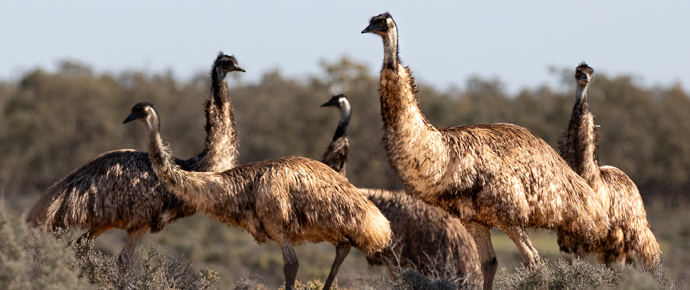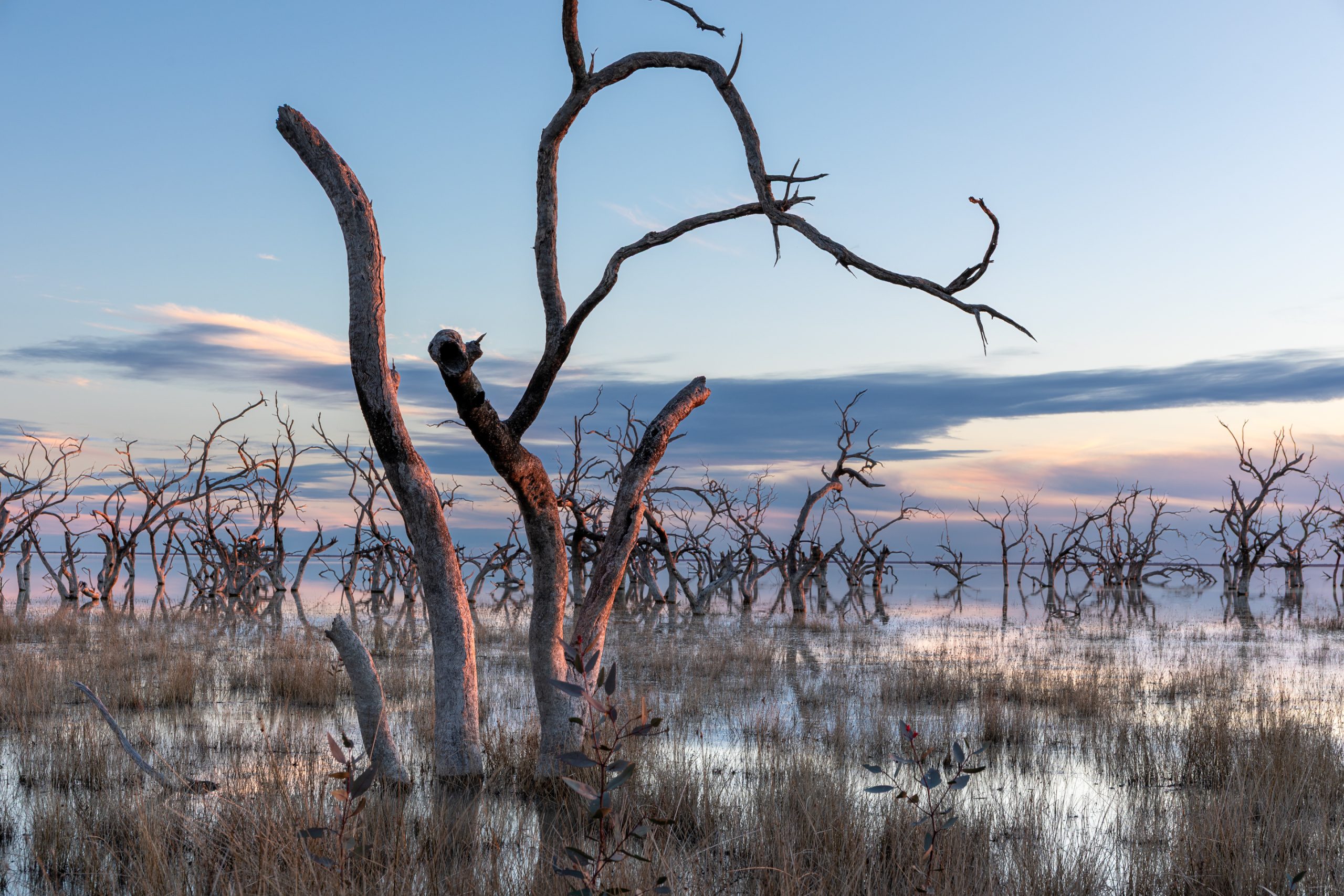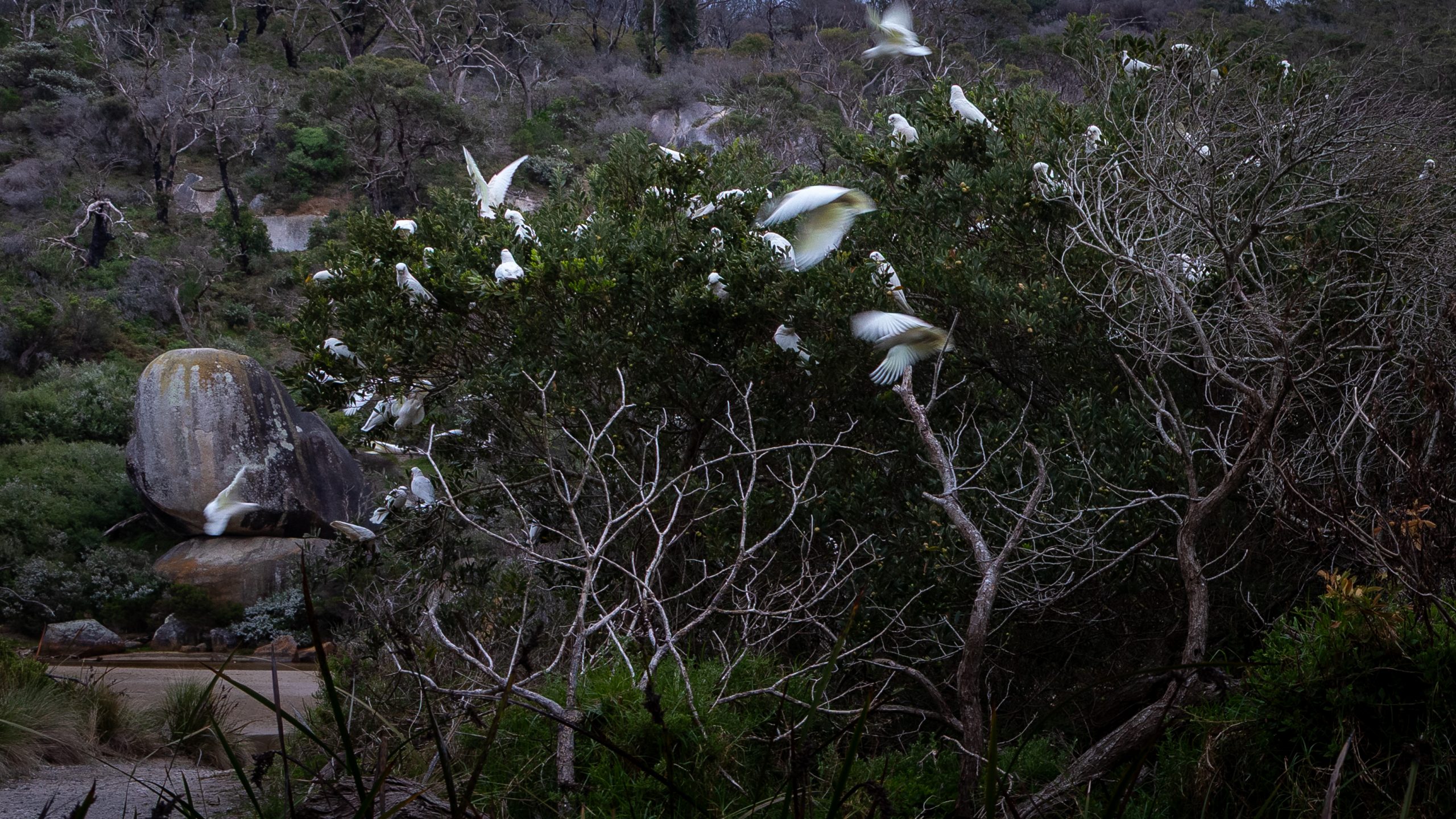Mobs on the Move – Emus at Kinchega National Park
Out on the wide open plains of Kinchega National Park, it’s not unusual to come across a mob of emus striding through the landscape. Their tall silhouettes cut across the horizon, weaving through saltbush and red dirt, always on the move. I was lucky enough to catch a few images of them gathered near the Menindee Lakes – one of those moments that feels both timeless and fleeting.
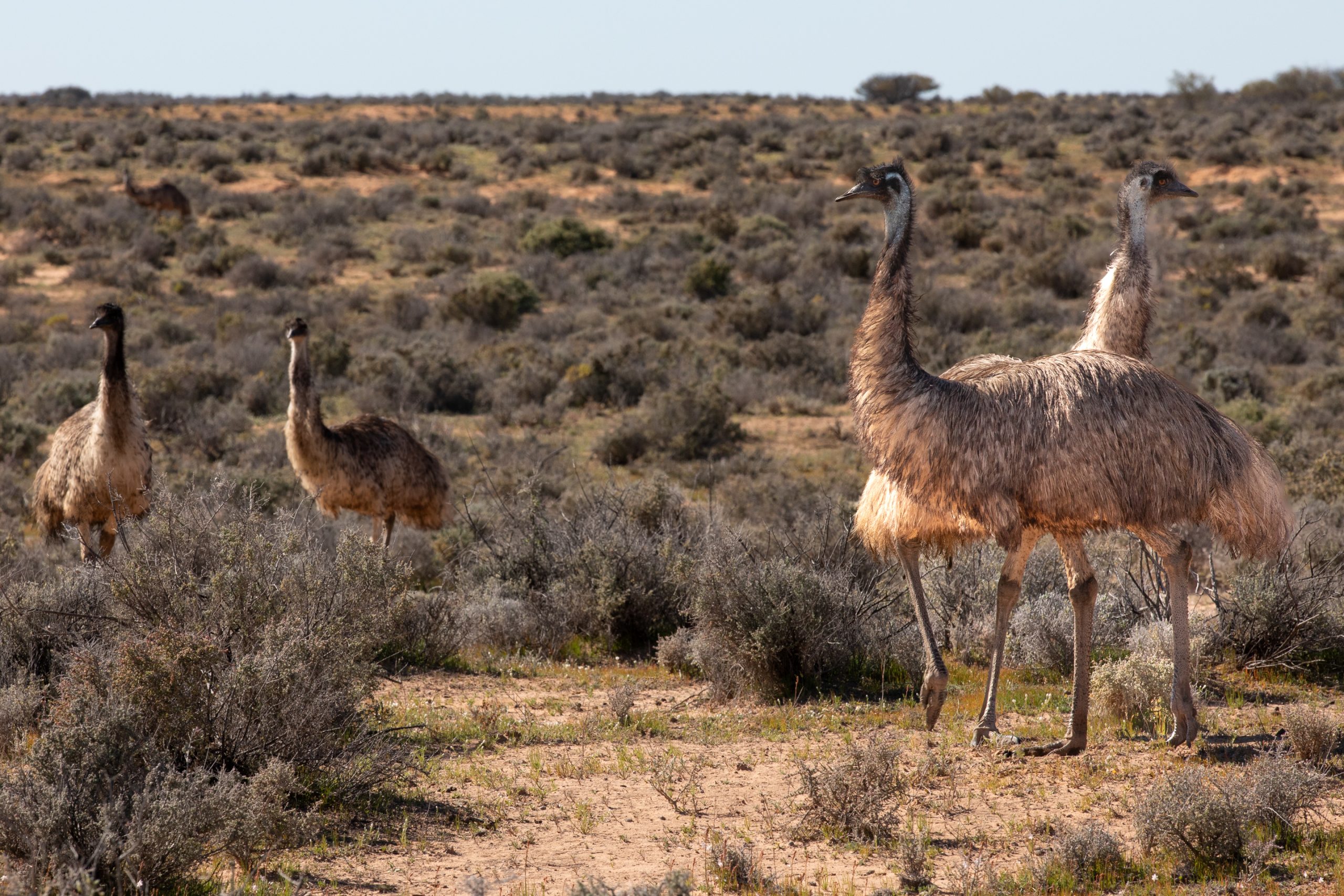
I’m usually most at home working slowly with a tripod, creating considered compositions and letting the frame settle. Wildlife, though, doesn’t wait. Emus in particular are rarely still for long – always striding, pacing, or vanishing back into the scrub. Photographing them meant working quickly, reacting to movement and light rather than shaping it. It was a challenge, but also a reminder that sometimes the best photographs are the ones that arrive unplanned.
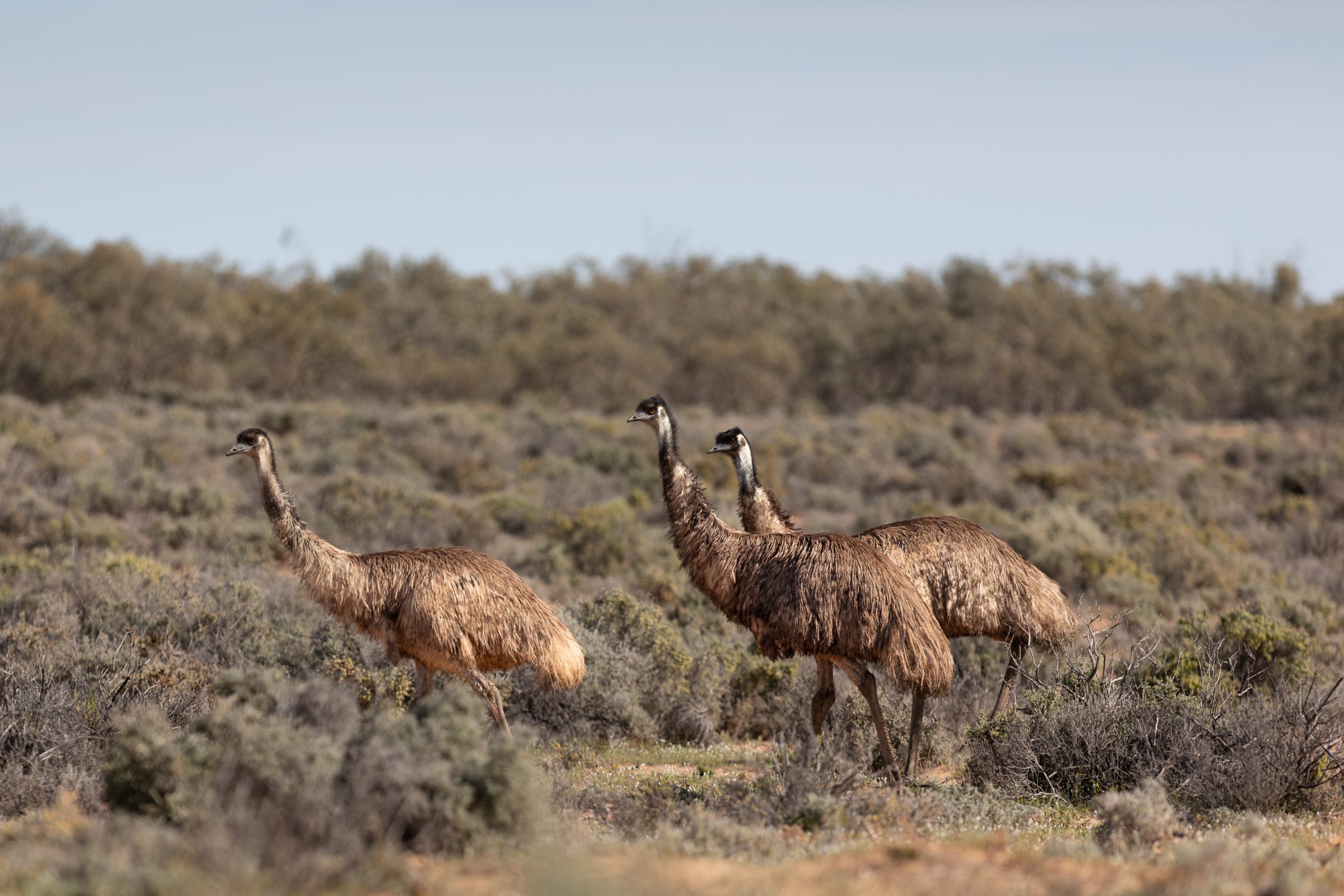
Emu behaviour and family life
Australia’s largest bird, the emu, can grow up to two metres tall and sprint at speeds of around 50 kilometres an hour. Despite their size, they’re surprisingly graceful, with a rolling gait that allows them to cover vast distances in search of food and water. They live in family groups known as “mobs,” often wandering across hundreds of kilometres during the year.
One of the most fascinating aspects of emu behaviour is their parenting. After the female lays the eggs, the male takes on the role of incubating them – for about eight weeks he’ll sit on the nest without eating, drinking, or leaving, and then raise the chicks once they hatch. A full-grown mob can be made up of the male with his striped young, moving like a caravan through the bush.
Cultural significance of the emu in Aboriginal Astronomy
Emus hold deep cultural significance in many Aboriginal cultures, woven into creation stories and songlines. While I was aware of Bruce Pascoe’s book Dark Emu, the shape of the Emu in the Sky was brought vividly to life during an Outback Astronomy sky show in Broken Hill, where the emu is traced not in the stars themselves, but in the dark dust lanes of the Milky Way. From March to July, the emu stretches across the night sky, and its changing position marks the shifting seasons. When it appears upright in April and May, it signals the time of year when emus are laying eggs; later, as the body shifts and the emu seems to sit on its nest, it reflects the period when chicks are hatching. These celestial markers guided seasonal knowledge, hunting, and ceremony for thousands of years.
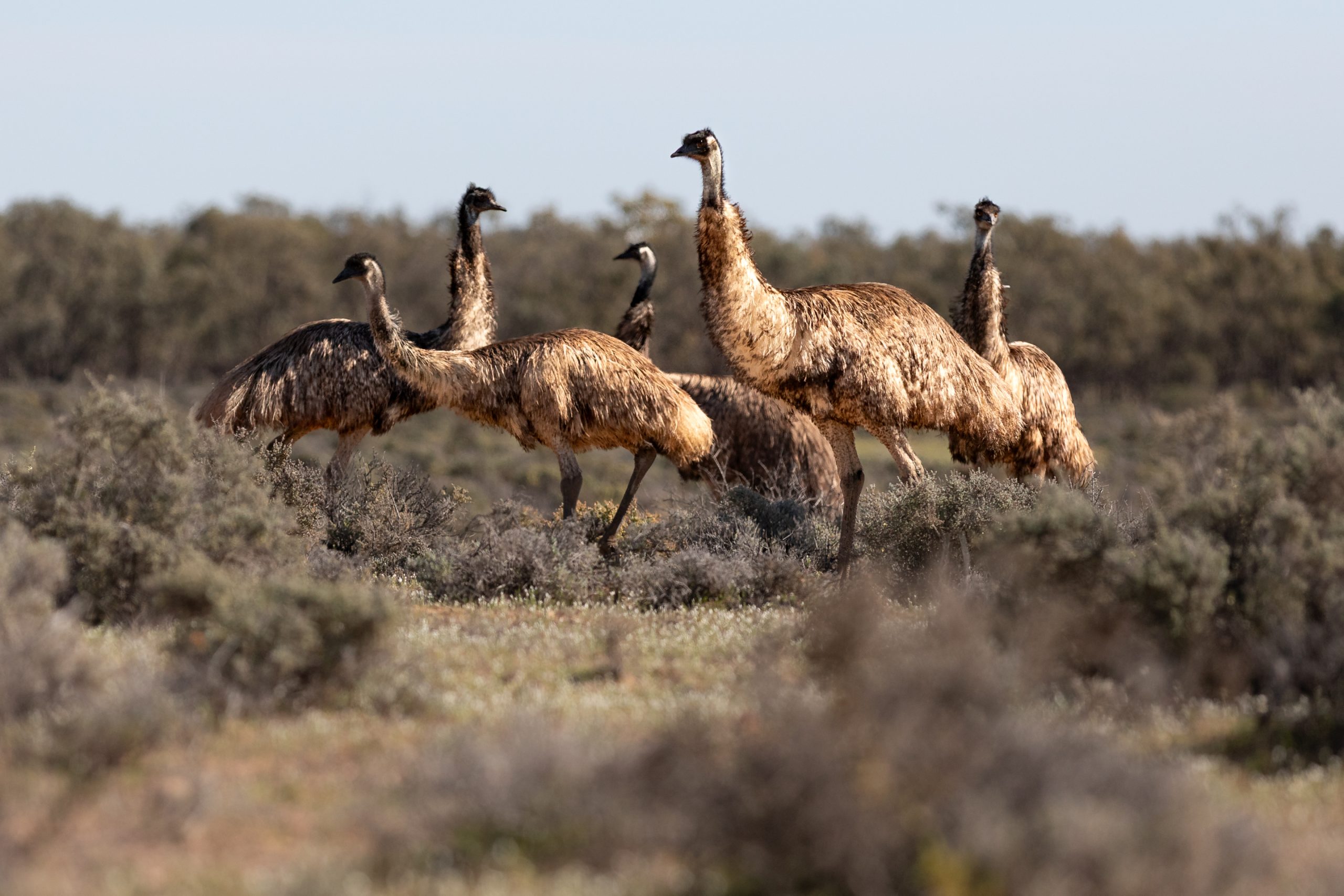
Visiting Kinchega National Park
Here in Kinchega National Park, with its vast inland waters and ochre earth, the emu feels right at home. A creature of survival, always in motion, and for me – a fleeting, unexpected subject, captured on the run.
For these shots, I used a Canon 5D Mark IV paired with a Canon 70-200mm f/2.8 lens, which allowed me to get close without disturbing the emus. Knowing they rarely pause, I set up a quick preset on shutter priority mode to capture movement sharply, letting the camera adjust exposure automatically. A key tip for photographing wildlife on the move: anticipate the action, keep your camera ready, and don’t be afraid to react quickly – sometimes the best images come in just a few fleeting moments.
Further reading
- Aboriginal astronomy can teach us about the link between sky and land, Kirsten Banks. The Guardian, 2018
- Aboriginal astronomy the star of Dreamtime stories, ABC, 2017
- Kinchega National Park, NPWS
You might also like…

